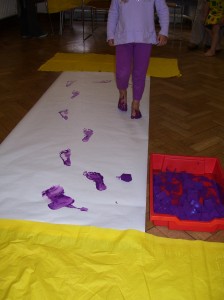When the Spouse and I got married, we received a huge pile of cards. It’s a beautiful practise, writing out blessings and giving them, tangibly, to a new couple. One of the cards had a prayer in it that the Spouse and I could be home for each other, that wherever we travelled, we would shelter each other and offer each other rest. We were about to set of adventuring overseas so it was a timely blessing and, over all the peregrinations since, it’s remained so.
It’s a beautiful, difficult calling in marriage – to be home for each other and to live at home each other – and so much more beautiful, difficult calling in the life of faith. Live in God. Make your home in God that wherever you go, you will be sheltered. Live at home in God, as God lives at home in you. The parallel structure and sheer familiarity of that last line may make it wash over you, but don’t let it. Read it again. Abide in me as I abide in you. Live at home in God. God is at home in you.
Last Sunday’s lectionary reading gave us the great image of the good shepherd, the image from Isaiah that Jesus echoed in his words and in his ministry. That image grounds us in the action of God – that God’s action is primary. Who God is and what God does comes first.
The image in this week’s reading – of the vine and the branches – shows that this primary action isn’t finished. It’s ongoing, it’s pregnant, growing, life-giving. The vine doesn’t go anywhere, but it patiently, peacefully provides strength and sustenance for the branches. The branches hold fast to the vine, letting life flow through them, bearing fruit. They are free to grow because the vine supports them. This is our response to Christ then – living freely and fruitfully, at home in Christ. And this is a trinitarian passage, too, because Christ teaches us that the Father is the vinegrower. God is the life in the vine and God is the life tending the vine. And we are, too, are part of that life.
I love this passage because it is yet another call into the new humanity in Christ. This is a new way of living – not focussed on rights and wrongs or method or group identity, but on supported freedom.
Daniel Migliore writes “Christian freedom is the beginning of a new freedom from the bondage of sin and for the partnership with God and others.” Faith Seeking Understanding
Abiding in God is our response to the good shepherd passages, and involves community as well as individual action. There’s church for you. God’s action always precedes, but ours always needs to follow. It isn’t our actions that create the conditions; our actions are the growth that the Life produces. At ground level, this makes sense to me through the lens of parenting. Love comes first – love always comes first. My kids don’t need to do anything to get me to love them. It is just how things are. They are my kids, and I love them. And loving them, I want to be with them and to teach them about the world. That’s where good behavior comes in. Good behavior clears space so that we can enjoy the love. When we are together and loving, then things flow smoothly and good things happen. We are fruitful. When we get turned aside, one way or the other, things get rockier and we need to spend more time on learning how to be good. How much more so with God.
Later in the passage, it is the words of Christ that abide with us, and that’s helpful, too. We need the words of life in our minds and in our hearts if we are to live at home with God. These mothering words of encouragement and repair that keep us focussed and loving.
At Canada Youth in 2009, one of the speakers, Mark Yaconelli, spoke about how God calls us into places where we need to be to learn faith. That we each are differently shaped faith-wise, and so we each have callings to different places where God can speak into the facts and habits of our days. I’m glad to have a mum-shaped soul and to find God speaking in the daily joys and negotiations of parenting.
And in the kids’ crafts, too. The pictures in this post are from a families event I did with the kids at church last year. We took the idea from the Messy Church resources, but here’s the quick run-down.
1) Cut up a sponge into small cubes and put in a bucket with purple paint.
2) Take off shoes and socks.
3) Squash the grapes with your toes, of course. (Use parental steadying hands – the paint may be slippery)
4) Then, step out of the bucket and walk along a long piece of paper, taped to the floor, leaving grapey footprint behinds as you go. Be sure to use a variety of foot sizes – grapes come in many sizes!
5) Later, when the paint has dried, add the vine, branches, and leaves.





